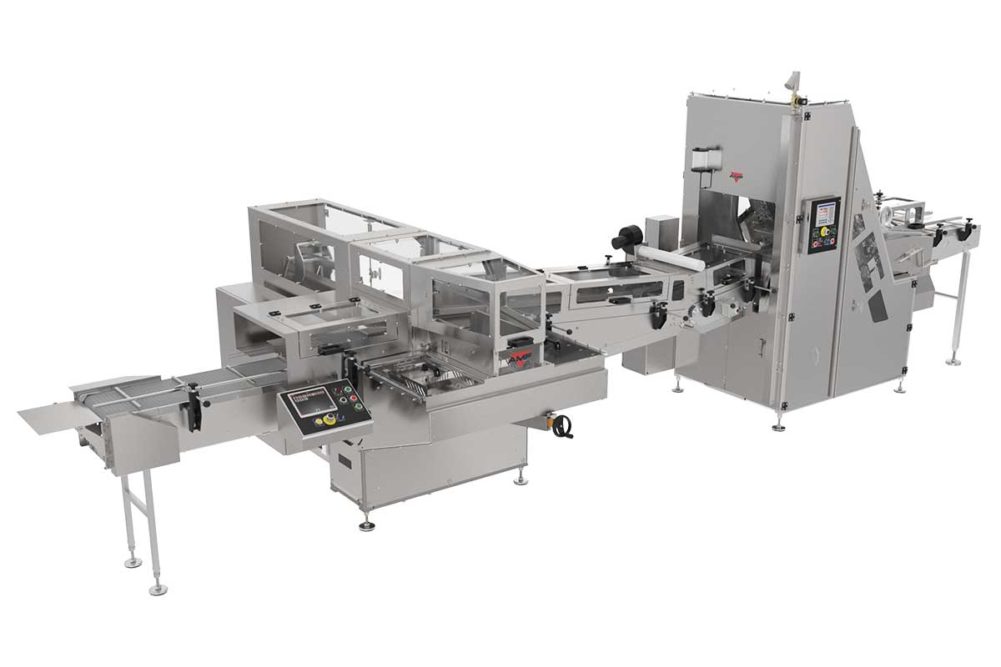March blew in with the coronavirus (COVID-19) and a challenge for the consumer-packaged goods (CPG) market. With stay-at-home orders in place across the United States people began panic-buying and pantry-stocking staples like bread. The demand was hard to keep up with, but eventually, manufacturers got up to speed with mixers, ovens and packaging lines running overtime as the need to fill store shelves increased.
“The industry came back quickly and aggressively,” said Jorge Izquierdo, vice-president of market development, PMMI, at the Pack Expo Connects virtual event. “CPGs in many sectors are finding themselves not working at 100% but at 100-plus percent in terms of capacity, and they’re relying on suppliers of packaging and processing technology to keep their equipment running.”
Increasingly, as the pandemic progressed, CPGs also started embracing the technology that represents the future of packaging. From sanitary design to tamper-evident and resealable packaging to remote maintenance, 2020 has accelerated the adoption of new packaging standards.
“Early in the pandemic, nobody was doing any projects,” said Ron Cardey, senior vice president, customer engagement, for Kwik Lok. “Everyone was just hunkered down making bread. Now we’re seeing some thawing out, and people are looking at doing more capital expenditure spending.”
COVID-19 has put sanitation and food safety at the forefront of manufacturers’ minds. Because of that, wrappers, baggers, sealers and closing machines are all being designed with sanitation in mind.
“At Heat and Control as well as our partners Ishida and CEIA, we have focused our developments and designs on ensuring our solutions feature the best in sanitary design to minimize any product build-up, opportunities for product contamination and simplify the customer’s sanitation products,” said Brian Barr, director of sales, Heat and Control.
Those design features ease the baker’s concerns about about potential risk to products, employees or the consumer.
AMF Bakery Systems has made several improvements on its Saber bread slicers and Mark bread baggers to enhance cleanability, sanitation and operator safety. These include advances that reduce manual operator and maintenance actions and improve machine versatility.
“For example, we’ve improved functionality for different bag materials or capacity for wider product dimensions with automated adjustments,” said Alain Lemieux, product group leader, AMF. “Also, we’ve worked diligently to integrate various specialized wrapping and handling systems to increase packaging solution versatility for bakers looking to diversify their product portfolio.”
Sanitary design requires added consideration given the current context of the pandemic.
“The capacity to quickly clean and changeover such equipment is crucial nowadays in the compressed production schedules,” Mr. Lemieux added. “Older equipment designs, even though still in good operating conditions, may not offer optimal cleaning accessibility for today’s realities.”
[Related reading: 2020 accelerating the adoption of automation in baked goods packaging]
Companies producing ready-to-eat products must deal with some of the highest sanitary requirements. So, BluePrint Automation (BPA) redesigned its Gravity 100r with sanitation in mind. A new tubeless, continuously TIG welded stainless steel frame allows it to be fully washed down, even in harsh environments.
“Sloped surfaces wherever possible allow water to run off during cleaning,” said Jason Hogue, southeast sales manager, BPA. “Fully automatic, push-button changeovers eliminate operator adjustments inside the machine, further reducing the opportunity for contamination by human interaction.”
The demands for more stainless-steel construction because of the current and future unknowns about additional sanitary requirements are “screaming” at packaging suppliers, as Bill Kehrli, vice president of sales and marketing, Cavanna Packaging USA, explained.
“We’re making major advances in Poka Yoke design, which is the toolless removal and tear down of equipment for cleaning,” he said. “In the past, you’d have to get in there with wrenches. Now you flip a lever, and everything comes apart so you can clean it.”
Tool-free removal of parts allows operators easy access to otherwise difficult to reach areas of a machine, such as the belt on a feed system. Not all bakers and snack makers are fully washing down their equipment lines — some still do wipe down and air cleaning — but the easy disassembly gives them the flexibility to add washdown capability if their facility supports it.
“It gives access to the belts, the rollers, the drives, all the moving components that can harbor food are greatly reduced,” Mr. Kehrli said. “It comes right apart like a jigsaw puzzle.”
The benefits of sanitary design are magnified when the latest forms of automation are also applied, and the chance for human error is reduced.
This article is an excerpt from the December 2020 issue of Baking & Snack. To read the entire feature on packaging innovations, click here.






